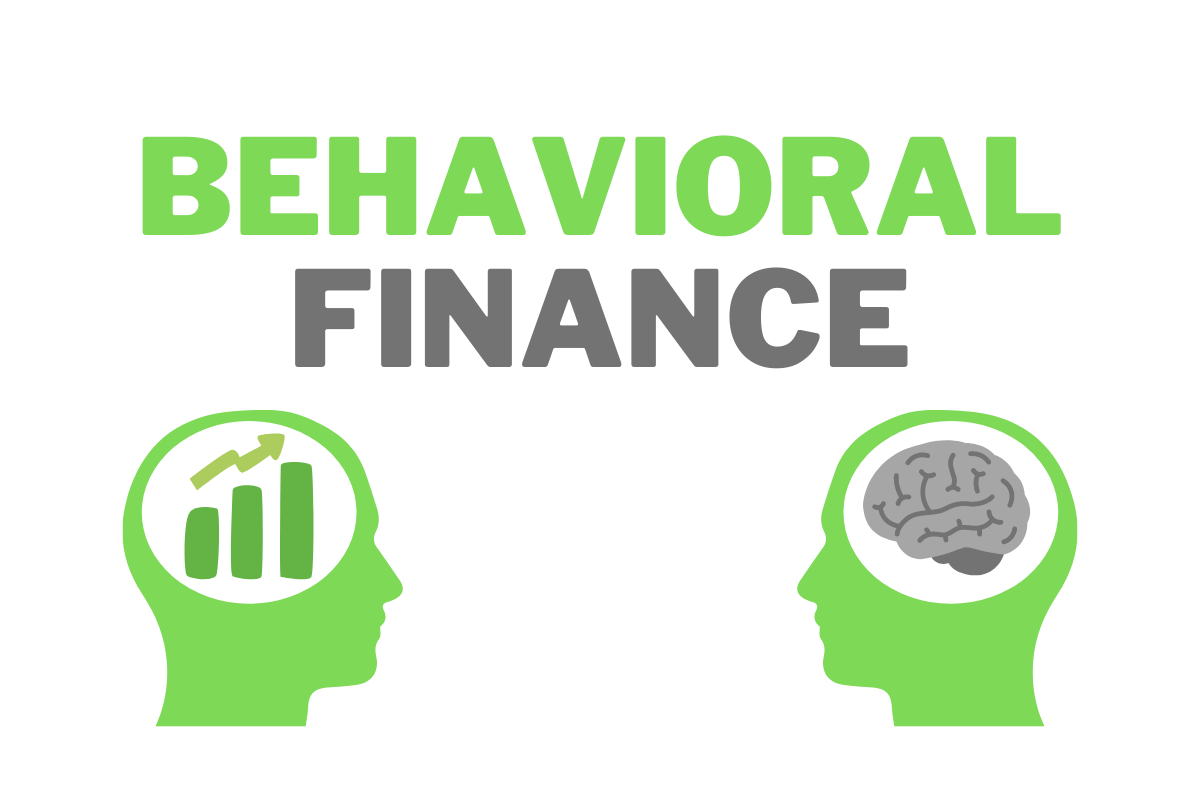Behavioral Finance - Definition, Concepts, And Biases
Behavioral finance is a theory that sheds light on why people make specific financial decisions. Professionals in finance and economics leverage this understanding to assist investors in making more informed choices about their money.
Author:Emmanuella SheaReviewer:Frazer PughDec 31, 20232.9K Shares141.9K Views

Behavioral financeis a theory that sheds light on why people make specific financial decisions. Professionals in finance and economics leverage this understanding to assist investors in making more informed choices about their money.
If you have an interest in finance or economics, grasping behavioral finance concepts can be advantageous. This article breaks down what behavioral finance is, highlighting its advantages, key concepts, and common biases.
Behavioral Finance Definition
Behavioral finance is a field that investigates the psychological factors influencing investors and financial markets. Its primary focus is on uncovering and elucidating inefficiencies and mispricings in financial markets.
By conducting experiments and research, behavioral finance illustrates that human behavior and financial markets are not always rational, often exhibiting flawed decision-making. This discipline seeks to understand how emotions and biases impact share prices, providing insights and explanations.
The roots of behavioral finance can be traced back to the work of psychologists Daniel Kahneman and Amos Tversky, along with economist Robert J. Shiller, during the 1970s-1980s. They applied the concept of deep-seated, subconscious biases and heuristics to the realm of financial decision-making.
Concurrently, finance researchers started challenging the efficient market hypothesis (EMH), a prevailing theory suggesting that the stock market operates in rational, predictable ways. Behavioral finance argues that markets are replete with inefficiencies due to investors' flawed perceptions of prices and risk.
Over the past decade, behavioral finance has gained acceptance in both academic and financial circles as a subfield of behavioral economics influenced by economic psychology. By delineating how, when, and why behavior deviates from rational expectations, behavioral finance offers a framework to enhance decision-making, guiding individuals to make more informed and rational choices in financial matters.
Understanding Behavioral Finance
Behavioral finance offers a multifaceted lens for analysis, with stock market returns being just one facet where psychological behaviors are believed to shape outcomes. The classification of behavioral finance aims to unravel the reasons behind individuals' financial choices and explore their repercussions on markets.
In the realm of behavioral finance, the assumption is that financial actors aren't perfectly rational and self-controlled but are instead subject to psychological influences with normal and self-regulating tendencies. The mental and physical well-being of investors plays a crucial role in financial decision-making. Changes in an investor's overall health can lead to shifts in their mental state, influencing decision-making and rationality across various real-world issues, including those specific to finance.
A pivotal focus in behavioral finance research is the examination of biases. These biases, arising from various factors, can typically be categorized into five key concepts. The comprehension and categorization of these biases become vital when delving into the study or analysis of outcomes and results within specific industries or sectors.
Behavioral Finance Concepts
Due to the diverse origins of biases, professionals employ behavioral finance concepts to analyze their causes and effects. These concepts are commonly categorized into the following five groups:
Mental Accounting
Mental accounting refers to the inclination of individuals to earmark and allocate money for specific purposes based on subjective criteria. This tendency can lead to assigning different values to the same amount of money, resulting in irrational or inconsistent financial behaviors.
For instance, an individual might maintain a low-return savings account while simultaneously carrying significant credit card debt. To counter the effects of mental accounting, finance professionals often advise clients to acknowledge this bias and treat equal sums of assets with equal value.
Herd Behavior
Herd behavior is the inclination of individuals to mimic the financial decisions of others, rather than conducting independent research and analysis. For instance, observing others investing in a particular stock might prompt an individual to follow suit.
To mitigate the impact of herd behavior, individuals can engage in thorough research to inform their financial decisions and assess associated risks. Throughout history, herd behavior has been known to instigate significant sell-offs and market rallies in the stock market.
Emotional Gap
An emotional gap occurs when an individual's financial decisions are driven by intense emotions. In the realm of finance, emotions such as anxiety, greed, enthusiasm, and fear commonly contribute to this phenomenon, leading to irrational decision-making.
The consequences of decisions influenced by fear and greed can adversely impact portfolios, thereby affecting the stability of the stock market and the broader economy. Finance professionals frequently aim to counsel individuals against succumbing to these emotional trends, advocating for long-term plans grounded in strong fundamentals and rational advice.
Anchoring
Anchoring is rooted in the phenomenon where a benchmark price significantly influences an individual's decision-making process. For instance, upon seeing a stock priced at $100, a professional might anchor their perception of the stock's value to this purchase price. This anchoring effect can lead them to fixate on that specific number, disregarding other indicators of value and adjusting their beliefs and actions accordingly.
The individual may mistakenly assume that the market price represents the true value, potentially leading to decisions based on outdated information. This could result in selling a high-performing stock while retaining an underperforming one, potentially incurring losses due to the anchoring bias.
Self-Attribution
Self-attribution is the inclination for individuals to make decisions by overestimating their skills, often perceiving their knowledge as superior to that of other professionals. This bias can result in inaccurate decision-making, as it neglects external influences and expertise. To mitigate the impact of self-attribution, individuals can benefit from heeding the advice of financial professionals and conducting thorough research on potential outcomes before committing to a decision.
Benefits Of Behavioral Finance
Understanding behavioral finance is crucial for professionals, as it enables them to comprehend the motivations behind individuals' financial decisions and their subsequent impact on the economy. Professionals can leverage behavioral finance concepts to elucidate the distinction between rational business decisions and those influenced by personal biases and impartial tendencies when communicating with clients. This understanding fosters better decision-making among individuals, contributing positively to the economic market.
Furthermore, behavioral finance equips investors with strategies to counteract negative biases in their financial decision-making. This knowledge empowers professionals to grasp how emotions and biases can shape the economy, offering profound insights into the causes and effects of these influences. Behavioral finance serves additional purposes, such as:
- Assisting professionals in making informed financial decisions.
- Teaching professionals the importance of thorough research in preparing for investments.
- Providing explanations for specific events in economic history.
- Enabling professionals to recognize and address their own biases.
- Encouraging diverse and well-informed financial decisions.
Biases Of Behavioral Finance
Breaking down biases in behavioral finance analysis reveals various individual tendencies, two of which are:
Confirmation Bias
Confirmation bias occurs when investors lean towards accepting information that aligns with their beliefs about an investment. Even in the presence of potentially flawed information, investors readily embrace it to validate the correctness of the investment decision.
Experiential Bias
Experiential bias, also known as recency bias or availability bias, emerges when investors' recollection of recent events skews their perspective, leading them to believe that the same event is more likely to recur. For instance, the financial crisis of 2008 and 2009 prompted many investors to exit the stock market.
The negative experience during that period increased their bias, making them more inclined to expect further economic hardship in the years to come. Despite this, the economy eventually recovered, and the market rebounded in the subsequent years.
Loss Aversion
Loss aversion manifests when investors assign more significance to the fear of losses than the satisfaction derived from market gains. In essence, the inclination is to prioritize avoiding losses over pursuing investment gains.
This tendency can lead some investors to seek a higher payout as compensation for potential losses. If such a lucrative outcome seems improbable, investors may opt to avoid losses altogether, even if the investment's risk aligns with rational considerations.
When applied to investing, the disposition effect becomes apparent. This phenomenon occurs when investors choose to sell their winning investments while holding onto their losing ones. The rationale behind this behavior is a desire to realize gains promptly. However, when confronted with a losing investment, the inclination is to retain it in the hope of recovering to the break-even point or the initial purchase price.
A key aspect of the disposition effect is investors' quick acknowledgment of being correct about an investment when there's a gain. Conversely, they exhibit reluctance to admit making a mistake when faced with a loss. The flaw in this bias lies in tying the investment's performance too closely to the entry price, disregarding changes in fundamentals or attributes that may have occurred over time.
Familiarity Bias
The familiarity bias occurs when investors lean towards investing in what they are familiar with, often favoring domestic companies or locally owned investments. Consequently, this bias leads to a lack of diversification across various sectors and types of investments, potentially reducing overall risk. Investors commonly opt for investments with which they have a history or are familiar, foregoing broader diversification opportunities.
Hindsight Bias
Hindsight bias prompts individuals to overestimate the accuracy of their informed guesses, attributing success to foresight when it might have been a mere coincidence. For instance, if an investor sells a stock just before its price declines, they may incorrectly believe they foresaw the decrease, instead of acknowledging the actual reasoning behind their decision. This bias can impact the financial analysis process by attributing reasons for certain practices that may not be genuinely relevant or accurate.
Heuristic Simplification
Heuristic simplification is a cognitive bias observed when professionals oversimplify their decision-making process. This tendency may result in financial decisions based on incomplete or inaccurate data.
Individuals influenced by heuristic simplification bias might selectively focus on only certain information relevant to their decision or exhibit overconfidence in their own knowledge, disregarding the expertise of finance professionals. To mitigate the impact of this bias, it is crucial to conduct thorough research and seek the counsel of professionals before making financial decisions, thereby recognizing and overcoming heuristic simplification bias.
Behavioral Finance In The Stock Market
The Efficient Market Hypothesis (EMH) posits that stock prices are efficiently valued at any given time in a highly liquid market, reflecting all available information. However, many studies have found long-term events in the stock market that go against the assumptions of the efficient market hypothesis and are hard to explain in models that are based on investors being perfectly rational.
The EMH operates under the premise that market participants evaluate stock prices rationally, taking into account all current and future intrinsic and external factors. In contrast, behavioral finance, when examining the stock market, challenges the notion of complete market efficiency. This perspective allows for the exploration of how psychological and social factors can impact the buying and selling of stocks.
The insights gained from understanding and applying behavioral finance biases extend to daily stock and other trading market movements. In a broader sense, behavioral finance theories offer clearer explanations for significant market anomalies, such as bubbles and deep recessions.
While not aligned with the EMH, investors and portfolio managers find value in comprehending behavioral finance trends. These trends can aid in analyzing market price levels and fluctuations, serving both speculative purposes and decision-making processes.
Behavioral Finance - FAQ
What Is The Foundation Of Behavioral Finance?
This area of inquiry is also sometimes referred to as "behavioral economics.' Behavioral finance combines the twin disciplines of psychology and economics to explain why and how people make seemingly irrational or illogical decisions when they spend, invest, save, and borrow money.
Who Started Behavioral Finance?
Richard Thaler, who was already a finance theorist at the time, added the economic and finance theory necessary to apply prospect theory to financial markets. All three of these men, Amos Tversky, Daniel Kahneman, and Richard Thaler, are today considered to be among the founding fathers of behavioral finance.
What Are The Objectives Of Behavioral Finance?
Behavioral finance attempts to explain how decision-makers make financial decisions in real life and why their decisions might not appear to be rational every time and, therefore, have unpredictable consequences. This is in contrast to many traditional theories, which assume investors make rational decisions.
What Is The First Generation Of Behavioral Finance?
The first generation, starting in the early 1980s, largely accepted standard finance's notion of people's wants as “rational” wants - restricted to the utilitarian benefits of high returns and low risk.
Bottom Line
Financial advisors are increasingly incorporating behavioral finance into their business models and client interactions. This approach is also gaining prominence among financial analysts, asset managers, and in the overall investment process. There's now a possibility to earn a behavioral finance designation, which can be beneficial if you aim to comprehend the markets or excel in the role of a financial advisor.

Emmanuella Shea
Author

Frazer Pugh
Reviewer
Latest Articles
Popular Articles

